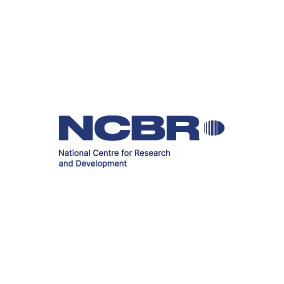Malaga, a city known for its rich history and vibrant culture, became the European capital of acoustics from 23-26 June 2025. It was here that the Forum Acusticum Euronoise 2025 took place – the eleventh edition of the prestigious European Acoustical Association (EAA) Conference, combined with the XLVI Spanish Acoustics Conference TECNIACUSTICA 2025. Organised by the Spanish Acoustical Association (SEA), this unique event provides a key platform for the exchange of the latest knowledge, innovative solutions and inspiring discussions in the field of acoustics and noise control.
The conference programme covered a wide range of topics, from scientific sessions to keynote presentations to technical exhibitions, where companies showcased their latest developments. We are proud to have included our Silencions expert Klara Chojnacka in such an important group of speakers.

Klara presentation: optimising resonant elements for better insulation and less weight
Klara Chojnacka presented the results of her research in a presentation entitled: ‘Optimizing locally resonant elements distribution on isotropic plate for increased sound insulation and mass reduction.’ The presentation focused on one of the most pressing challenges of modern acoustic engineering: how to effectively reduce noise and vibration while minimising the mass and dimensions of structures.
Traditional methods of increasing sound insulation often rely on the use of heavy, bulky materials, which involves compromises in terms of cost, aesthetics and functionality. In many sectors – from transportation to advanced machinery systems to building structures – there is an urgent need for solutions that achieve the desired acoustic performance while remaining lightweight and compact.
One of the solutions being developed in today’s scientific world to solve the problem of heavy and inefficient structures is vibroacoustic metamaterials. Through the use of appropriately designed small resonant elements placed on the surface of a partition, e.g. a wall, an appliance enclosure, it is possible to reduce the propagation of vibrations in the structure and thus increase the acoustic isolation of the partition.
Vibroacoustic metamaterials allow a narrow-band increase in sound insulation with a small addition of mass and thickness to the basic structure. In order to determine the effectiveness of the metamaterial, it is necessary to use complex simulation methods such as Finite Element Method calculations for three-dimensional geometries (FEM). This significantly increases the calculation time and makes it impossible to optimise the geometry of the individual resonant elements as well as their distribution over the available partition surface. The result is suboptimal performance of the metamaterial and, by assuming a uniform distribution of elements, an unnecessarily increased weight of the solution.



Optimisation of the placement of locally resonant elements
Clare’s research takes this issue further. They focus on optimising the placement of locally resonant elements – small mass-spring-damper systems that, despite their small size and weight, have the ability to effectively damp wave propagating through partitions/walls in selected frequency ranges. The key is to analyse how best to position these elements on the surface to maximise their effectiveness in reducing noise and reduce the overall weight of the structure (Fig. 1). This approach opens up new design possibilities, allowing engineers to create more efficient, lighter and innovative acoustic solutions.
Klara has developed a procedure for optimising the distribution of resonant elements on the surface of a rectangular partition. The first step was to reduce the calculation time for the sound insulation of the baffle with resonant elements (read more: https://yadda.icm.edu.pl/baztech/element/bwmeta1.element.baztech-5c4fbba0-12f0-4cde-8dc1-2a087c50ba3f). The result of the work was a three-dimensional model of the baffle with a grid of resonant elements distributed over the entire surface of the baffle (see Fig. 2). It was then necessary to develop a cost function to minimise the number of resonant elements on the baffle. In order to keep the efficiency of the metamaterial at its original level, a limiting function was also developed, in which the difference between the sound insulation of the baffle before optimisation and in the current iteration of the calculation was checked.
The final result of the work is an optimisation procedure that allows the number of resonant elements to be reduced by as much as 40% while keeping the metamaterial efficiency virtually unchanged.
Figure 3 shows an example of the optimisation result, which confirms that the algorithm works. The sound insulation curves before and after optimisation coincide, even though the number of elements has decreased dramatically. Figure 4 shows the optimum distribution of resonant elements on the partition. It is worth noting that, depending on the frequency range, the baffle parameters or the parameters of the resonant elements, this distribution will vary, so the result will be different depending on the case under consideration.



The future of acoustic engineering: practical application of resonant element optimisation
Klara Chojnacka’s research translates into practical applicability. Their approach to optimising resonant elements has a number of benefits that could significantly influence design approaches in many sectors:
● Reduction in construction weight: achieving the same, or even better, sound insulation with a significant reduction in construction weight.
● Cost savings: lower material consumption and easier transport translate into real reductions in production and installation costs.
● Greater design freedom: engineers gain the flexibility to design quiet systems that are both compact and efficient.
● Improved acoustic environment: in the end, the use of such solutions contributes to quieter and more comfortable spaces, both in industry and in everyday life.
This line of research is central to the development of acoustic engineering, responding to the growing demand for intelligent and efficient solutions to combat noise.
Silencions: commitment to acoustic development
At Silencions, we are constantly striving to innovate, both in terms of products (as in our proprietary sTwist acoustic silencers) and in offering a service.
Aktywny udział naszych ekspertów w globalnych wydarzeniach, takich jak Forum Acusticum Euronoise 2025, to potwierdzenie zakorzenionego w DNA firmy zaangażowania w rozwijanie najnowocześniejszych rozwiązań akustycznych. Jesteśmy dumni, że nasi naukowcy nie tylko śledzą światowe trendy, ale sami aktywnie je współtworzą, dzieląc się swoją wiedzą i inspirując innych do poszukiwania nowych dróg w redukcji hałasu.
Czy Twoja firma poszukuje wsparcia w zakresie redukcji hałasu lub przeprowadzeniu badań akustycznych? Nasi eksperci z Silencions wykorzystują najnowszą wiedzę i badania, aby tworzyć spersonalizowane rozwiązania odpowiadające na wyzwania Twojego biznesu.
Skontaktuj się z nami już dziś, aby dowiedzieć się, jak możemy wesprzeć Twoje projekty i przyczynić się do sukcesu Twojej firmy.

